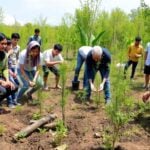In the realm of writing, particularly when it comes to crafting essays or personal statements, understanding the prompt is paramount. A prompt serves as a guiding beacon, illuminating the path you should take in your writing journey. It is essential to dissect the prompt thoroughly, identifying its key components and underlying themes.
This involves not just reading the words on the page but engaging with them critically. What is being asked of you? Are there specific questions that need to be answered?
Is there a particular tone or style that the prompt suggests? By breaking down the prompt into manageable parts, you can better align your thoughts and ideas with the expectations set forth, ensuring that your response is both relevant and compelling. Moreover, understanding the prompt also means recognizing the audience for whom you are writing.
Different contexts demand different approaches; an academic essay will differ significantly from a personal narrative. By considering who will read your work, you can tailor your language, examples, and overall message to resonate with that audience. This awareness not only enhances the clarity of your writing but also increases its impact.
Engaging with the prompt on multiple levels—content, style, and audience—will ultimately lead to a more nuanced and effective piece. Thus, taking the time to fully comprehend the prompt is not merely a preliminary step; it is a foundational aspect of successful writing that can significantly influence the quality of your final product.
Key Takeaways
- Understand the prompt by carefully reading and analyzing the requirements
- Showcase your unique story by highlighting personal experiences and perspectives
- Highlight your achievements and goals to demonstrate your potential and motivation
- Craft a captivating introduction and conclusion to engage the reader from the start to the end
- Revise and edit your essay for clarity and impact, ensuring that your message is effectively communicated
- Seek feedback and proofread your essay to ensure it is polished and error-free before submission
Showcasing Your Unique Story
Unveiling Your Unique Narrative
Every individual has a distinct story shaped by their experiences, values, and aspirations. When writing an essay or personal statement, it is crucial to showcase this unique narrative in a captivating way that grabs the reader’s attention. Your story is not just a collection of events; it is a tapestry woven from the threads of your life experiences, challenges overcome, and lessons learned.
Discovering the Threads of Your Story
To effectively convey your narrative, consider what makes your journey different from others. What pivotal moments have defined you? How have these experiences influenced your perspective and goals? By reflecting on these questions, you can begin to articulate a narrative that is not only personal but also relatable and engaging.
Crafting a Compelling Story
In crafting your unique story, it is essential to employ vivid imagery and emotional resonance. Rather than simply stating facts or listing achievements, immerse your reader in your experiences. Use descriptive language to paint a picture of significant moments in your life, allowing the reader to feel as though they are walking alongside you on your journey. This approach not only makes your story more compelling but also fosters a deeper connection with your audience.
Authenticity: The Key to a Memorable Narrative
Remember that authenticity is key; be honest about your struggles and triumphs alike. By presenting a genuine portrayal of yourself, you invite readers to understand and appreciate the complexities of your character, ultimately making your narrative more impactful and memorable.
Highlighting Your Achievements and Goals

While showcasing your unique story is vital, it is equally important to highlight your achievements and future goals within your writing. Achievements serve as tangible evidence of your capabilities and dedication, providing concrete examples that support your narrative. Whether they are academic accomplishments, extracurricular activities, or personal milestones, these achievements should be woven seamlessly into your story.
Rather than merely listing them, contextualize each achievement within the framework of your overall narrative. Explain how these accomplishments have shaped you as an individual and contributed to your growth. This approach not only demonstrates your competence but also illustrates your journey toward self-discovery and personal development.
In addition to highlighting past achievements, articulating your future goals is crucial for providing direction to your narrative. What do you aspire to achieve in the coming years? How do these goals align with your past experiences and current values?
By clearly outlining your ambitions, you create a sense of purpose within your writing. This forward-looking perspective not only showcases your motivation but also invites readers to envision the potential impact you could have in your chosen field or community. Furthermore, discussing how you plan to achieve these goals can add depth to your narrative, demonstrating that you have thoughtfully considered the steps necessary for success.
Ultimately, by effectively highlighting both achievements and goals, you create a well-rounded portrayal of yourself that resonates with readers on multiple levels.
Captivating Introduction and Conclusion
The introduction and conclusion of any written piece are critical components that frame the entire narrative. A captivating introduction serves as the gateway to your story, drawing readers in with an engaging hook that piques their interest. This could be an intriguing anecdote, a thought-provoking question, or a striking statement that encapsulates the essence of your narrative.
The goal is to create an immediate connection with the reader, compelling them to continue reading with anticipation. Additionally, the introduction should provide a brief overview of what to expect in the body of the essay, setting the stage for the themes and ideas that will be explored. Equally important is the conclusion, which serves as the final impression you leave on your audience.
A well-crafted conclusion should not merely restate what has already been said; instead, it should synthesize key points and reflect on their broader significance. This is an opportunity to reiterate how your unique story, achievements, and goals intertwine to create a cohesive narrative about who you are as an individual. Consider leaving readers with a thought-provoking statement or a call to action that encourages them to reflect on their own journeys or aspirations.
By thoughtfully constructing both the introduction and conclusion, you create a sense of closure while reinforcing the impact of your narrative.
Revising and Editing for Clarity and Impact
Once you have drafted your essay or personal statement, the process of revising and editing becomes essential for enhancing clarity and impact. This stage involves critically evaluating your work with fresh eyes, identifying areas where improvements can be made. Start by assessing the overall structure of your piece; does it flow logically from one idea to the next?
Are there any sections that feel disjointed or unclear? By addressing these structural concerns, you can ensure that your narrative unfolds in a coherent manner that guides readers through your story seamlessly. In addition to structural revisions, pay close attention to language and word choice throughout your writing.
Strive for precision in your vocabulary; avoid vague terms that may dilute the strength of your message. Instead, opt for specific language that conveys your ideas with clarity and conviction. Furthermore, consider varying sentence structure to maintain reader engagement; a mix of short, impactful sentences alongside longer, more complex ones can create a dynamic rhythm in your writing.
Finally, don’t underestimate the power of proofreading for grammatical accuracy and punctuation correctness. These seemingly minor details can significantly affect how polished and professional your final piece appears.
Seeking Feedback and Proofreading

Seeking Feedback from Others
The final stages of crafting an impactful essay involve seeking feedback from others and conducting thorough proofreading. Sharing your work with trusted peers or mentors can provide invaluable insights that you may not have considered during the writing process. Constructive criticism can help identify strengths in your narrative as well as areas for improvement that may enhance clarity or engagement.
Embracing Constructive Criticism
When seeking feedback, be open-minded; remember that different perspectives can illuminate aspects of your writing that may need refinement or rethinking. After incorporating feedback into your revisions, it is crucial to conduct meticulous proofreading before submitting or sharing your work. This step involves carefully reviewing every word for spelling errors, grammatical mistakes, and punctuation issues.
Effective Proofreading Techniques
Reading aloud can be particularly effective in catching awkward phrasing or unclear sentences that may disrupt the flow of your narrative. Additionally, consider taking a break between drafting and proofreading; returning to your work with fresh eyes can help you spot errors more easily. By dedicating time to both feedback and proofreading processes, you ensure that your final piece is not only compelling but also polished and professional—an authentic reflection of who you are as a writer and individual.
If you’re looking for additional resources to enhance your scholarship essay, consider exploring specific scholarship opportunities that align with your goals and interests. For instance, the CFAS Scotland-Pakistan Scholarships for Young Women and Girls offers a unique opportunity that could provide a real-world context to your essay. Understanding the requirements and objectives of such scholarships can give you a clearer idea of how to tailor your essay to stand out, by directly addressing the criteria that scholarship committees are looking for.
FAQs
What is a scholarship essay?
A scholarship essay is a piece of writing that is submitted along with a scholarship application. It is used to showcase the applicant’s personality, achievements, and aspirations in order to convince the scholarship committee that they are the best candidate for the award.
What are the key elements of a standout scholarship essay?
A standout scholarship essay should have a strong introduction, a clear thesis statement, compelling body paragraphs that support the thesis, and a memorable conclusion. It should also be well-organized, free of grammatical errors, and demonstrate the applicant’s unique voice and perspective.
How can I make my scholarship essay stand out?
To make your scholarship essay stand out, focus on telling a compelling story that highlights your strengths, experiences, and goals. Use specific examples and vivid language to make your essay memorable. Additionally, be sure to tailor your essay to the specific scholarship and its requirements.
What are some common mistakes to avoid in a scholarship essay?
Common mistakes to avoid in a scholarship essay include: not following the prompt, using generic language and cliches, not proofreading for errors, and not showcasing your unique personality and experiences. It’s also important to avoid being overly boastful or insincere in your writing.
How long should a scholarship essay be?
The length of a scholarship essay can vary depending on the specific requirements of the scholarship. However, most scholarship essays are typically between 500 and 1,000 words. It’s important to carefully review the scholarship guidelines to ensure that your essay meets the specified length requirements.


























